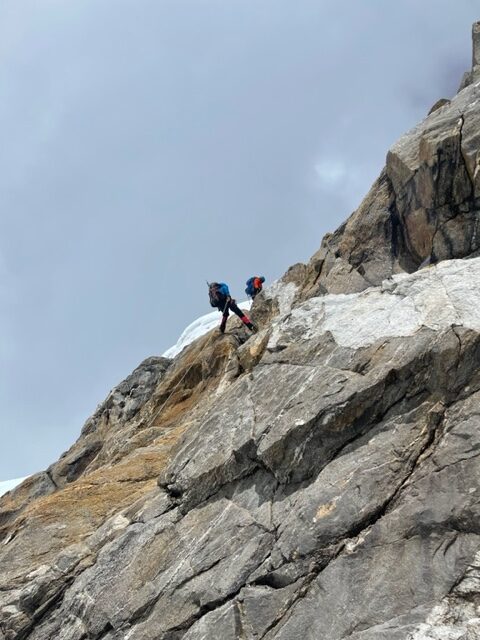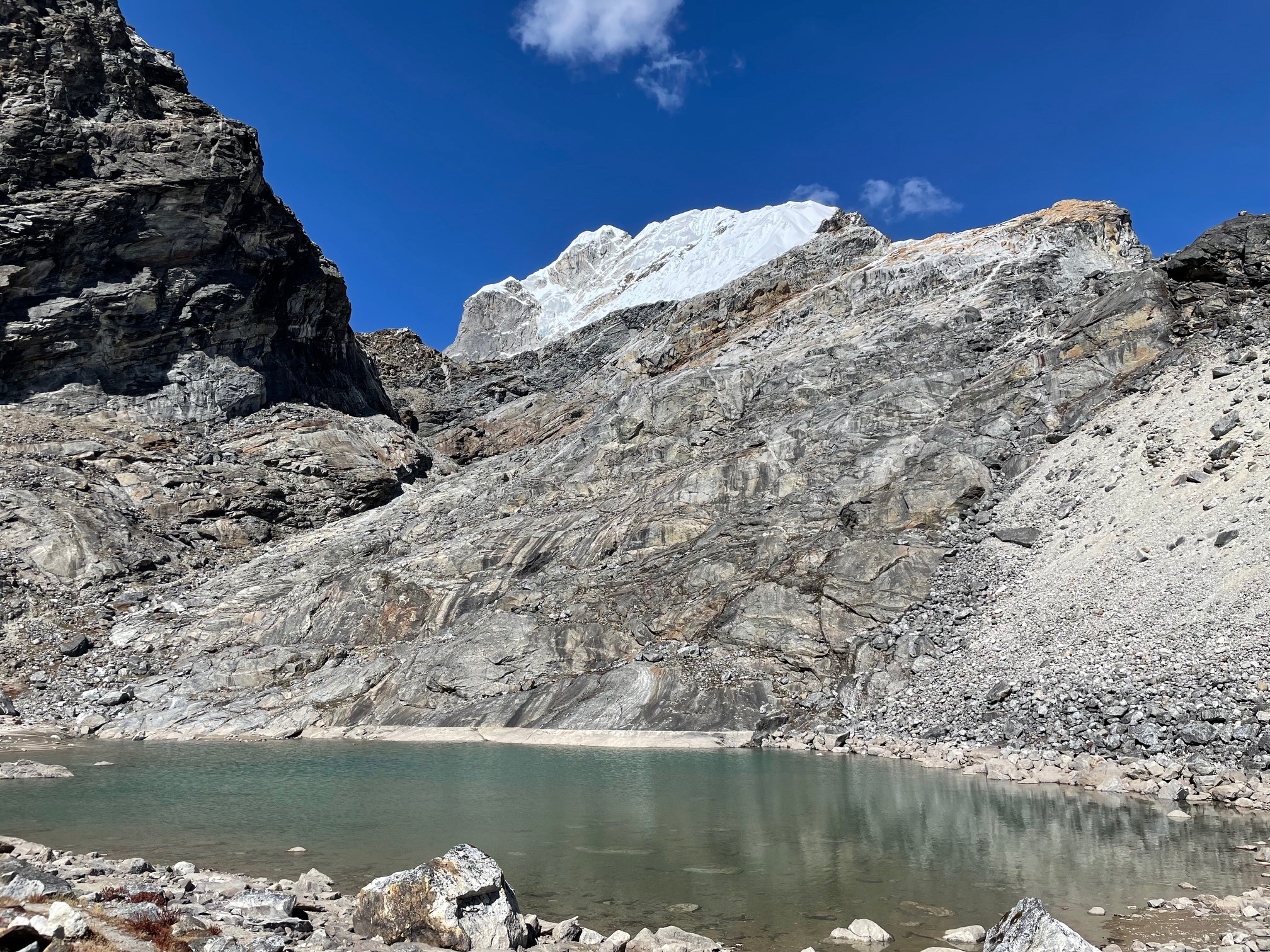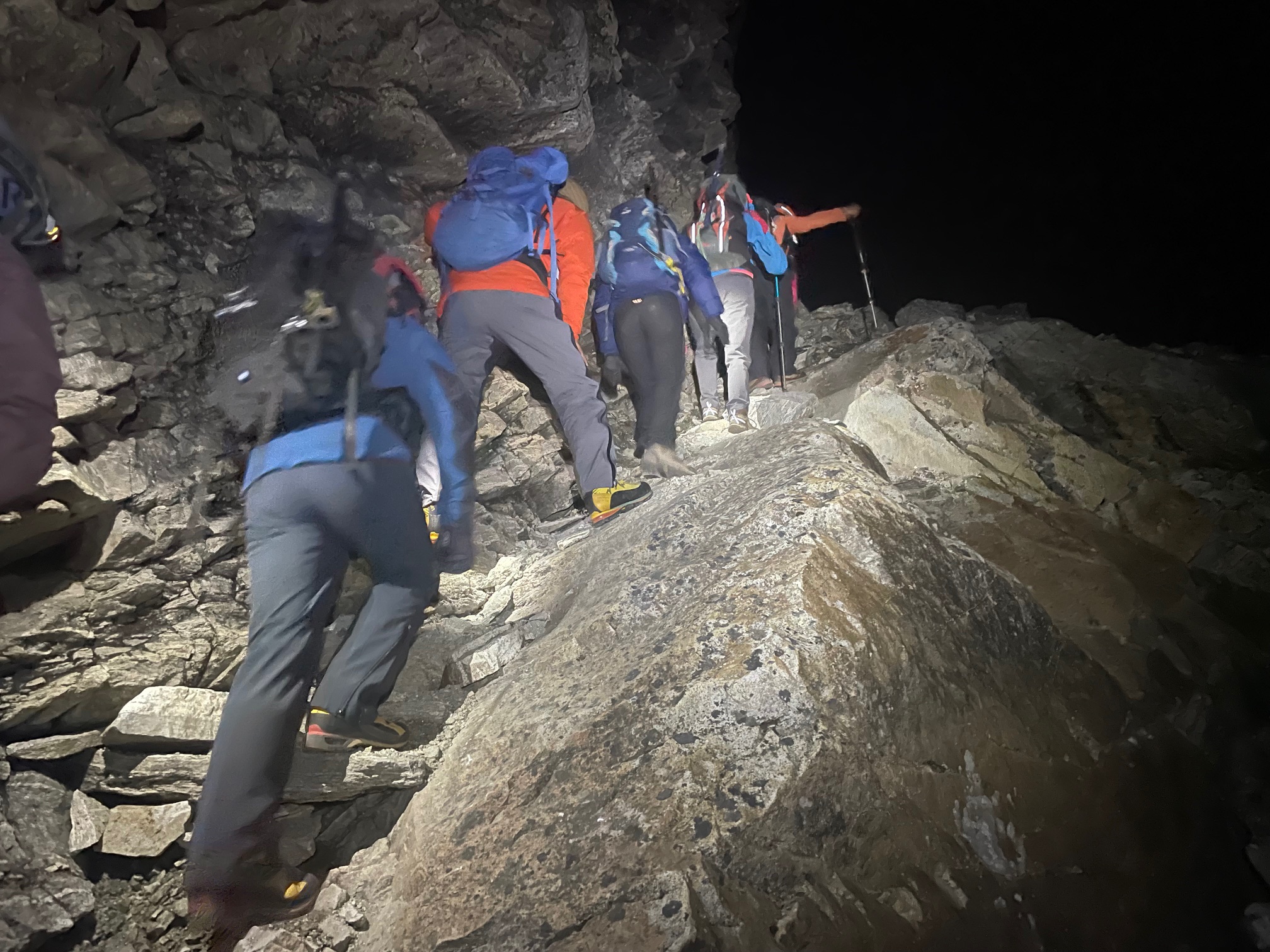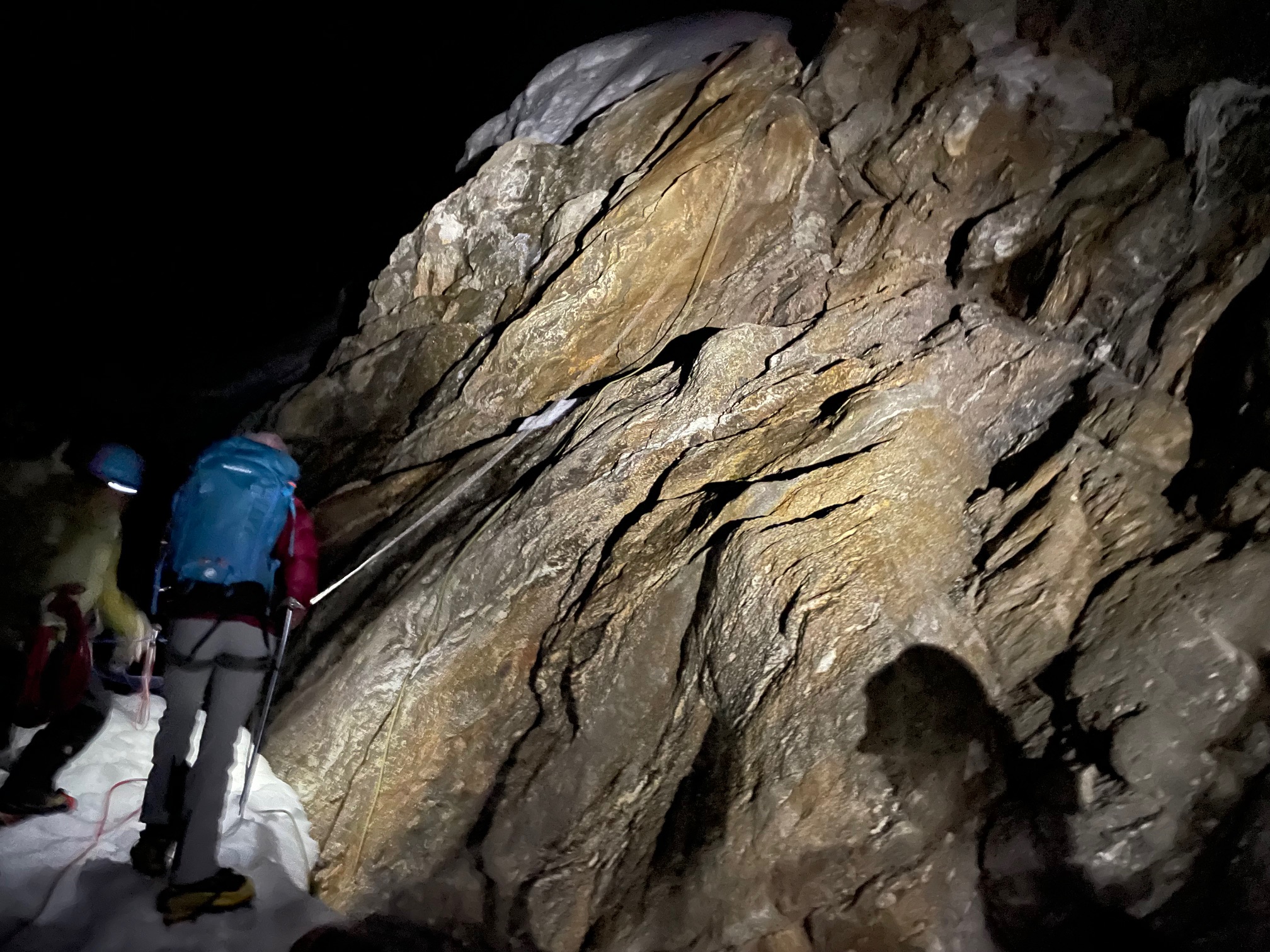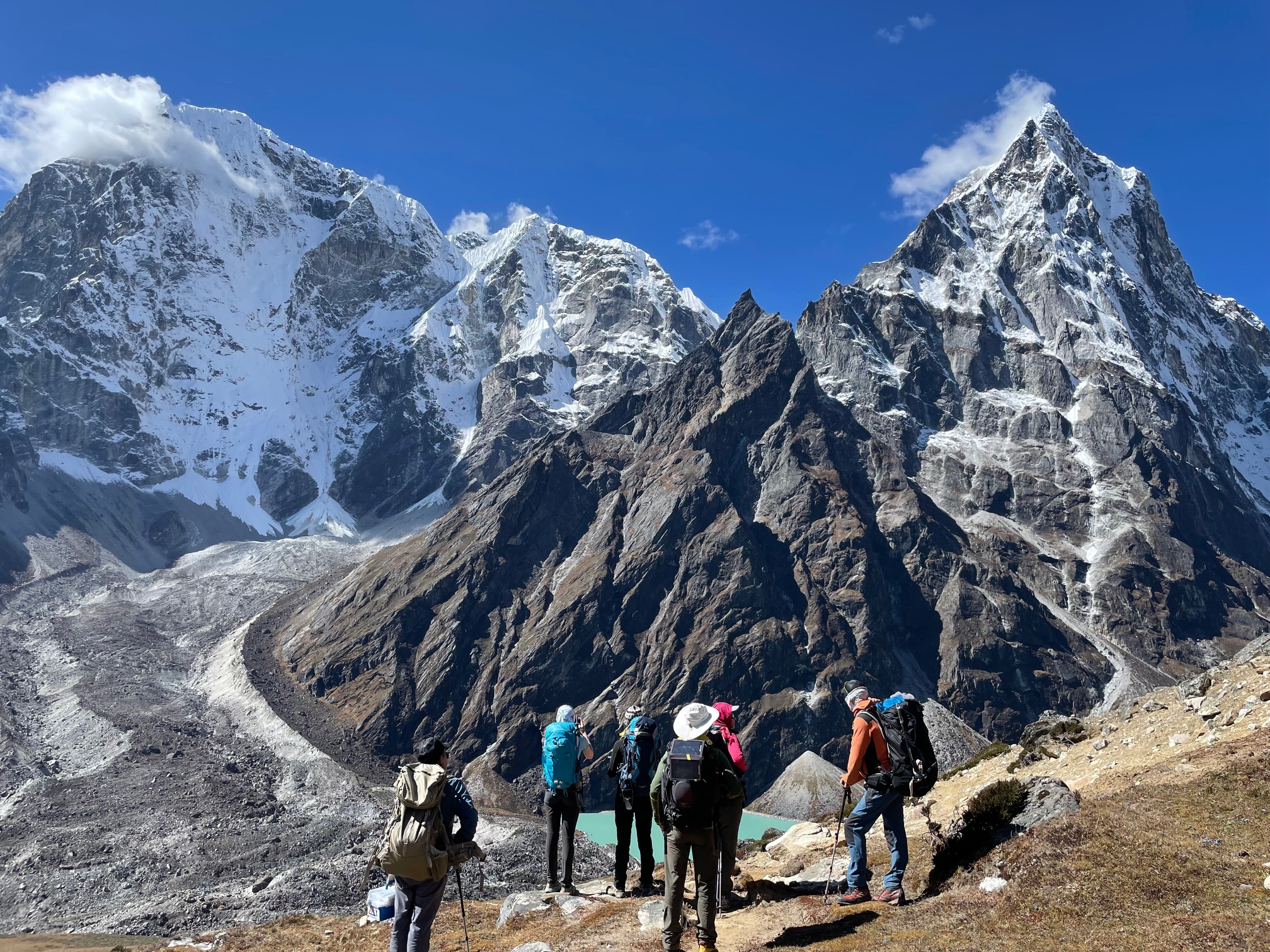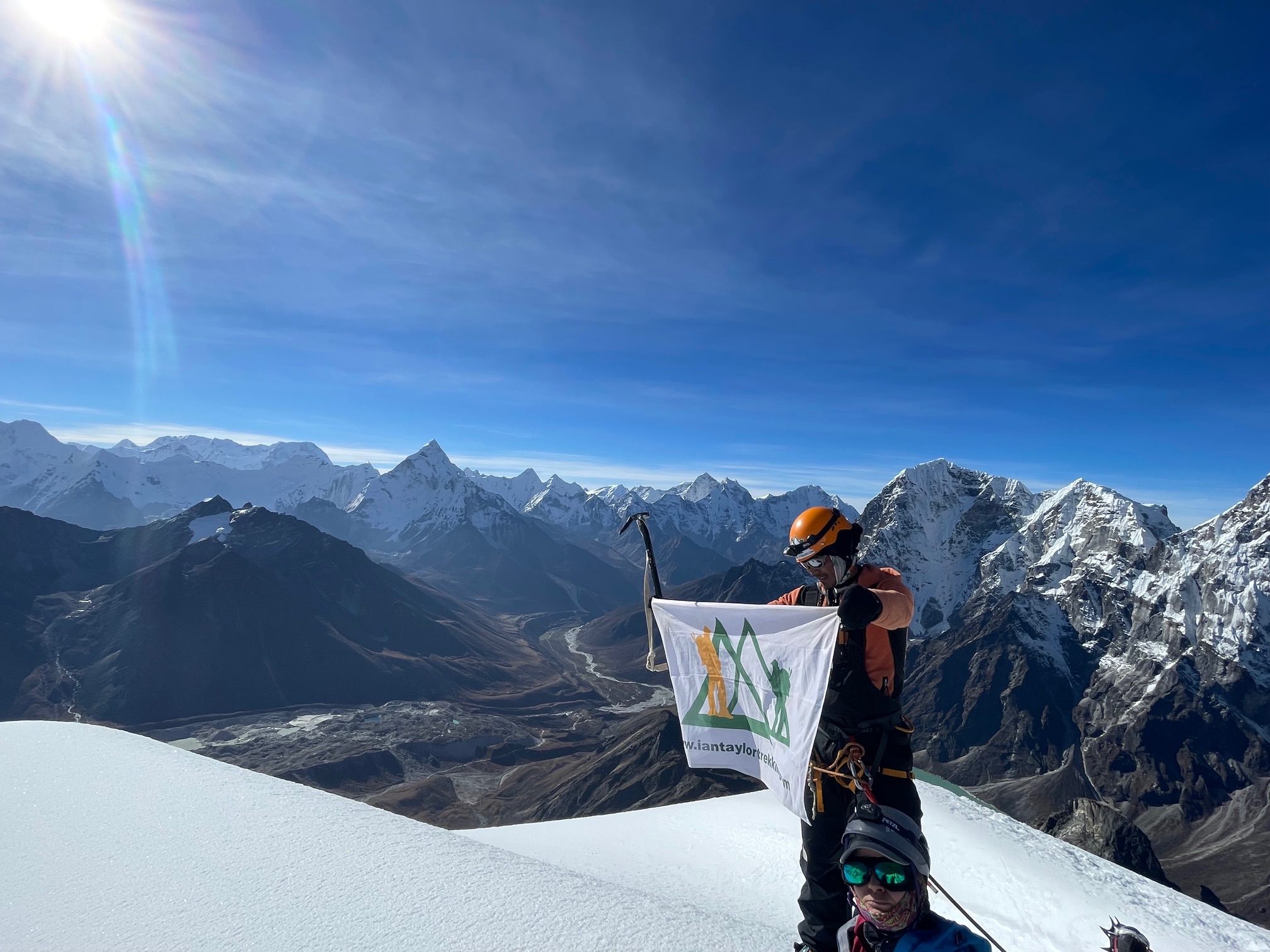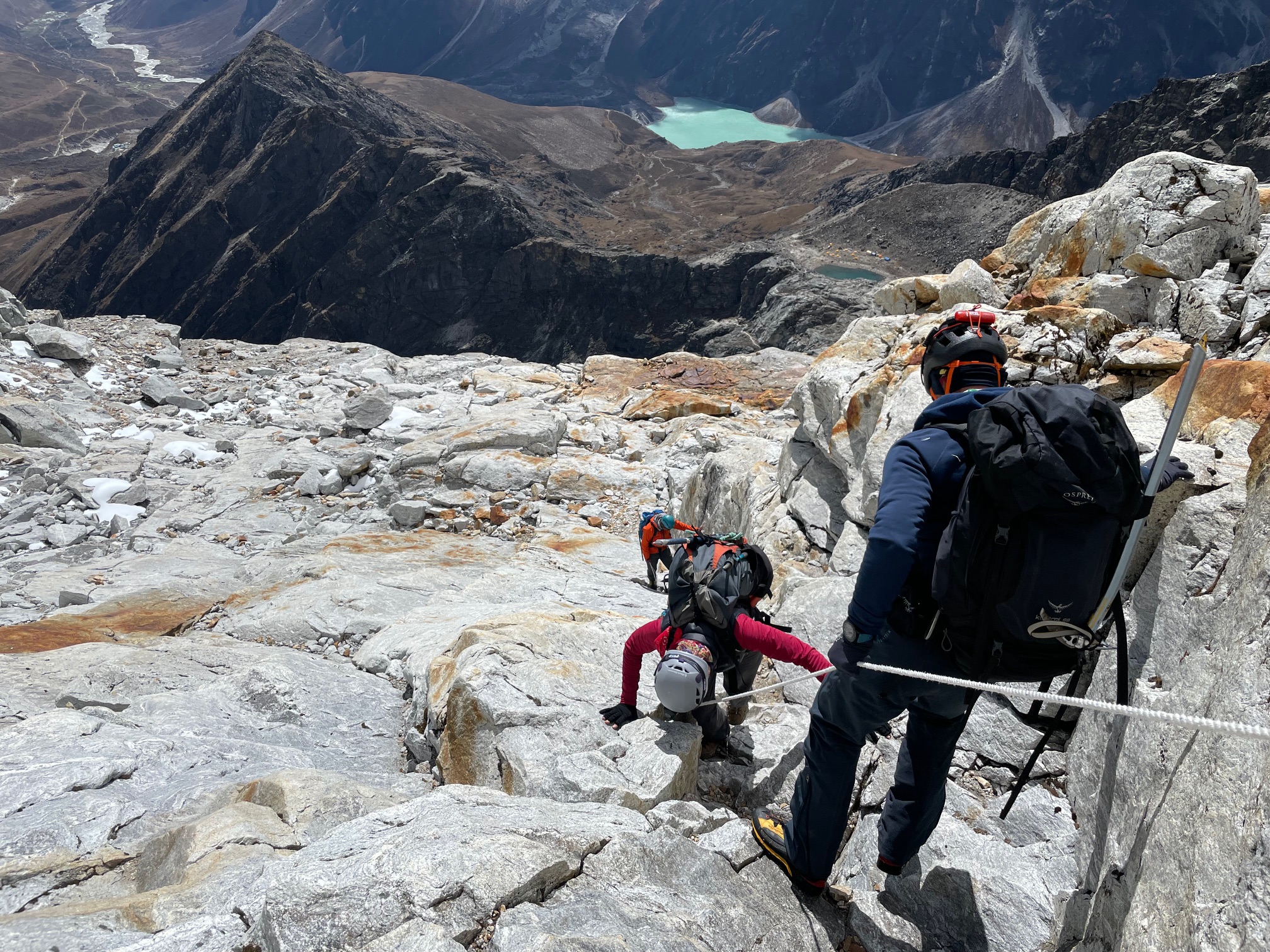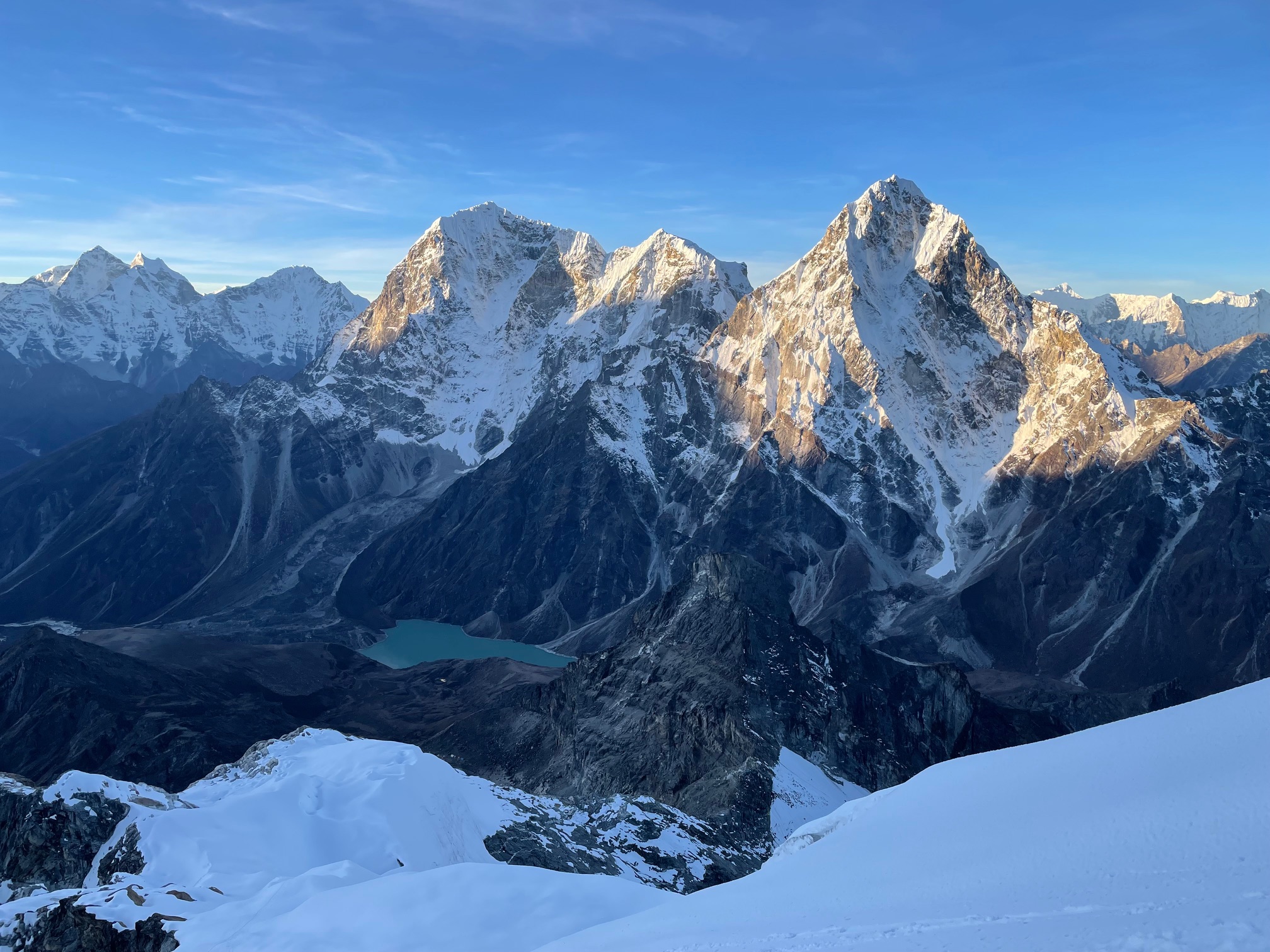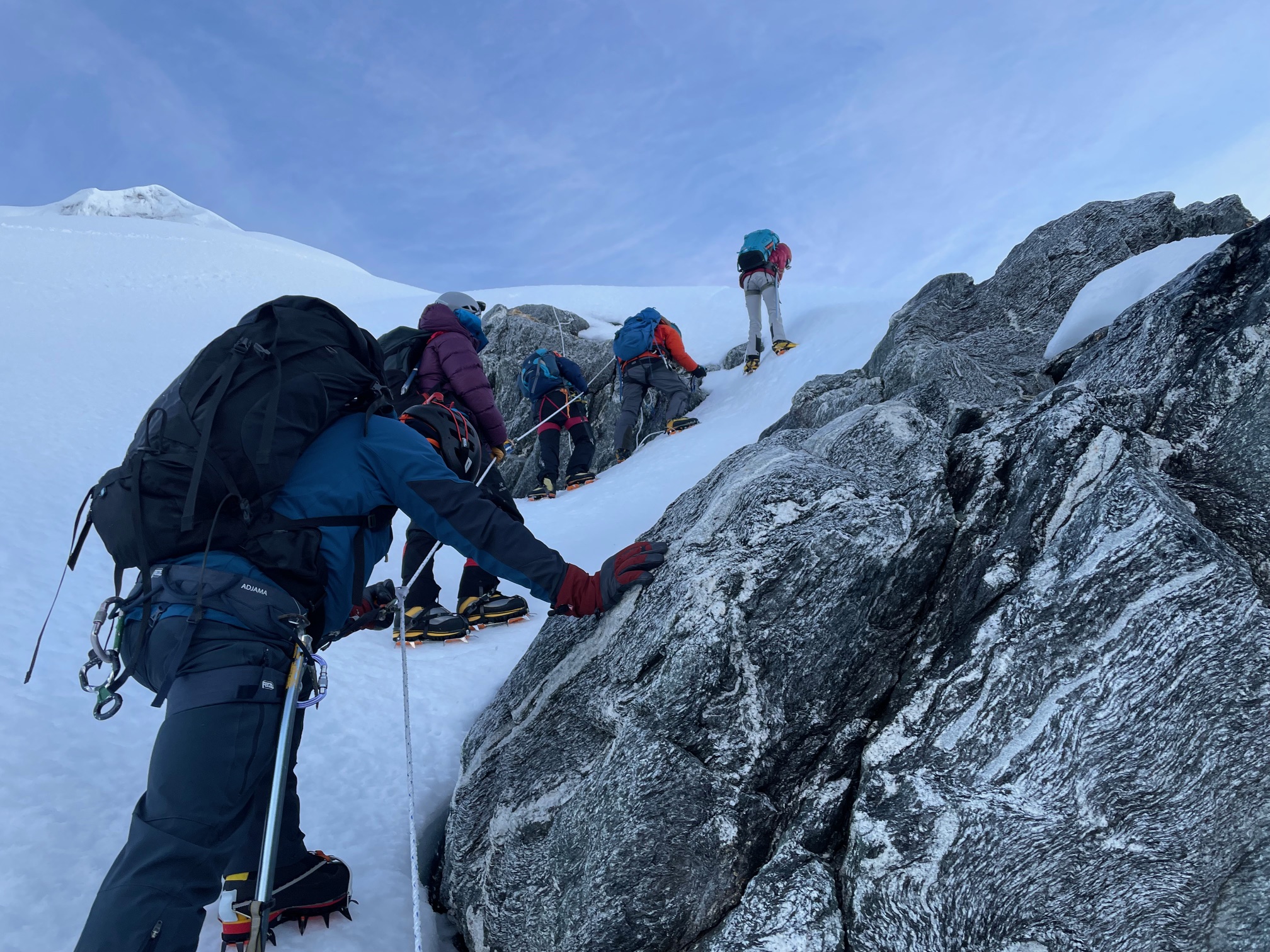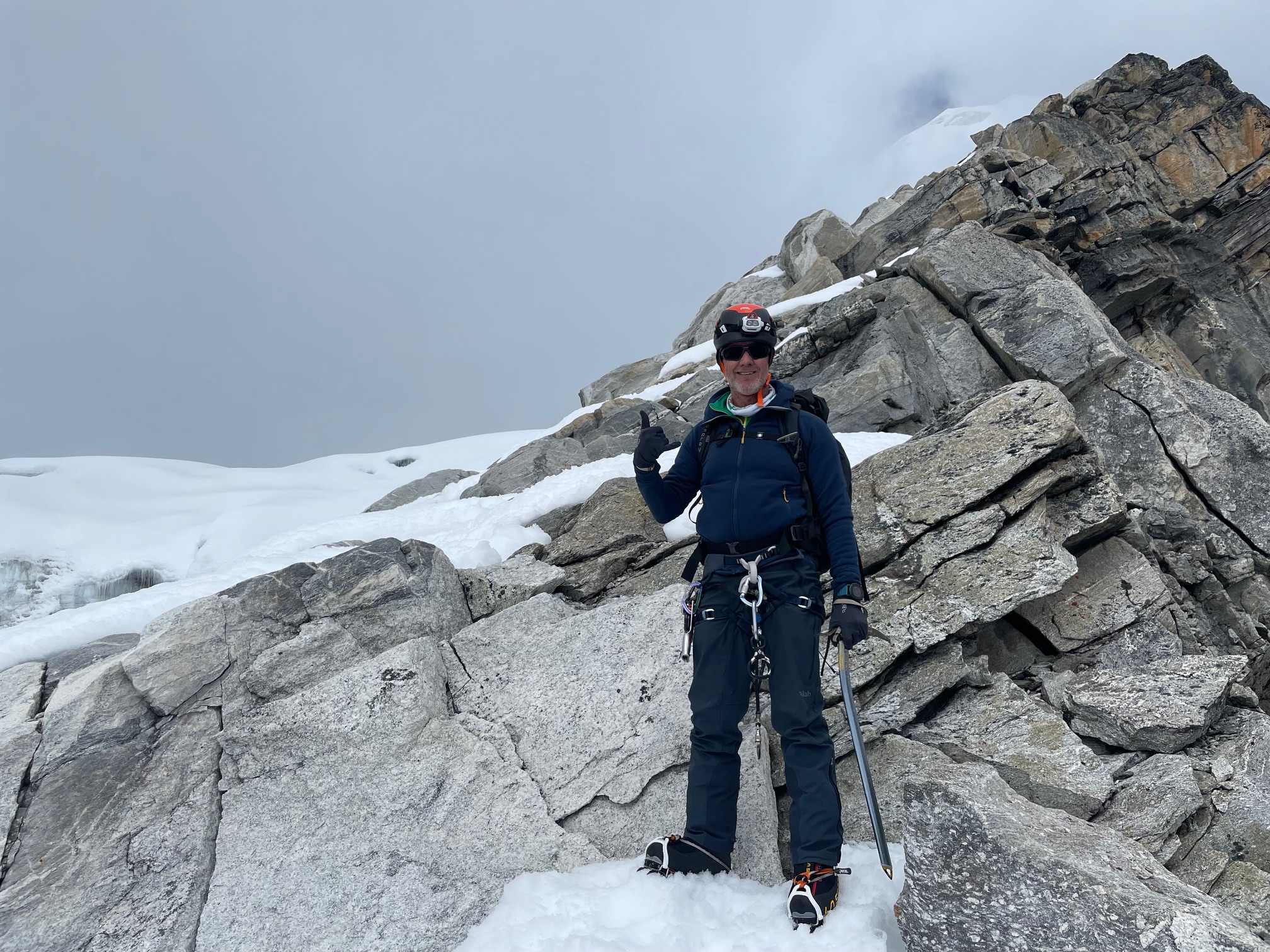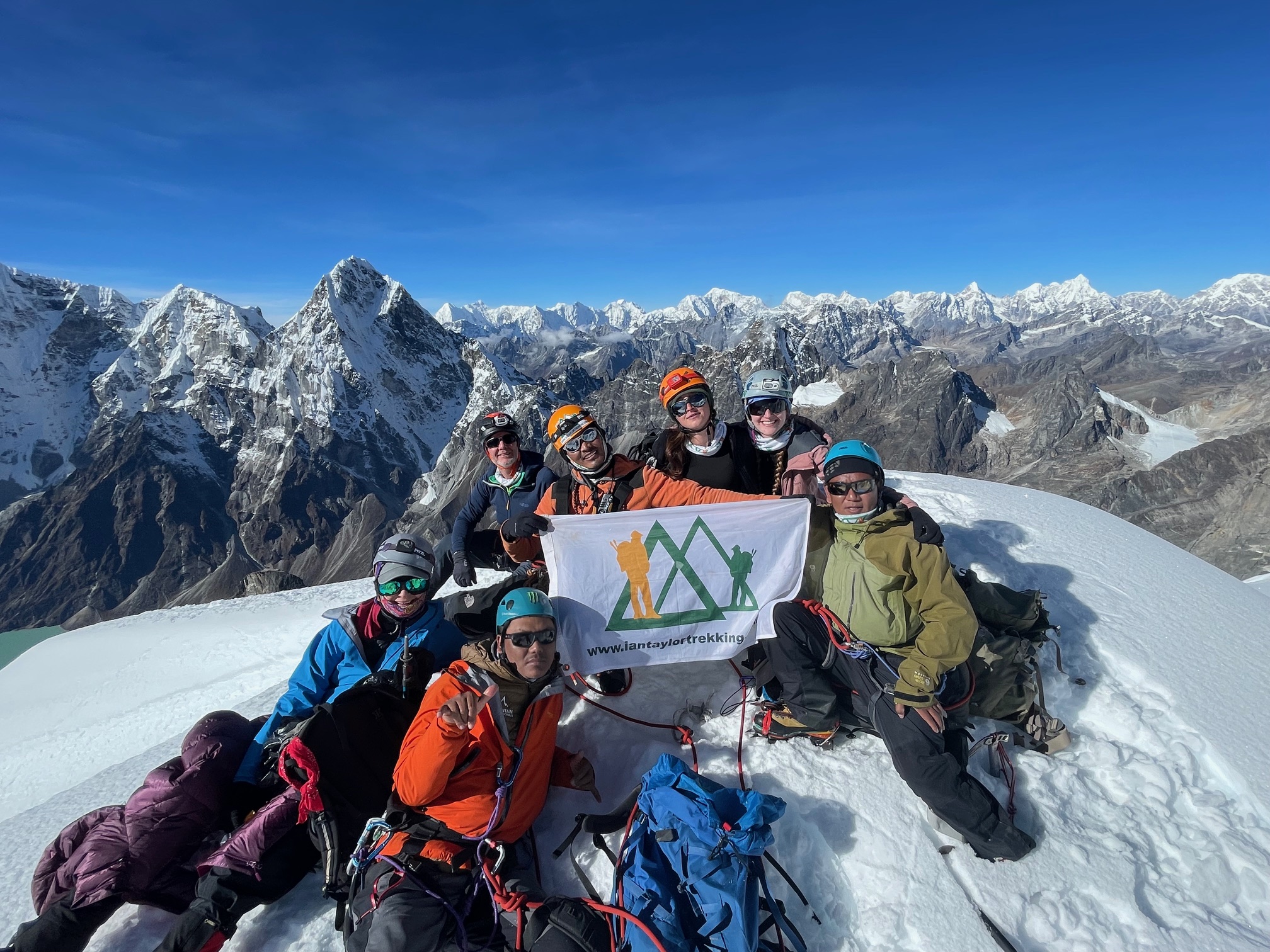Here is our advice when Training for Lobuche Peak. We have added essential tips for a Successful Lobuche Climb. I have climbed Mount Everest to the top and Lobuche 10+ times. Check out out TOP TIPS and then visit our Lobuche Page.
Is Lobuche East a Technical Climb
Firstly, You need to prepare yourself physically and mentally for the challenge of climbing Lobuche Peak. Lobuche is positioned 5 miles from Mount Everest in the Himalayas.
Secondly, Most of the journey is trekking with one long day of mixed Alpine and fixed line mountaineering on 40 to 60 degree angled terrain. For a Lobuche climb we require that you have been on a fixed line training course.
Thirdly, having expert guidance and training tips helps you come prepared and we run these courses in Colorado and Scotland. Learn about specific mountaineering techniques, physical conditioning, and safety measures to ensure a safe and successful ascent.
Finally, The key mountaineering training should be completed so you can be safe on the descent. You will want your safety line with carabiner on the fixed line. The safety device should be kept above the figure of 8 (descending device) as you abseil down.
Introduction to Lobuche Peak Climbing
When gearing up for the thrilling adventure of climbing Lobuche Peak in the Himalayas, comprehensive training becomes imperative. Unlike a mere trekking experience, scaling Lobuche Peak demands rigorous preparation and technical skills. In this guide, we’ll delve into the essential aspects of training and readiness to tackle the challenges of this majestic peak near Mount Everest.
Take a Step by Step Approach
We take the climb of Lobuche Peak seriously and you should too. There are a range of factors that will determine your success. Firstly, you need an itinerary with plenty of acclimatization and contingency days.
Secondly, you need to develop a training plan relevant to this specific trek and climb. Finally, make sure you understand the specific Himalayan style, fixed line climbing techniques needed to be safe high on the glacier.
We want to make sure our clients come to Nepal with the right physical and technical preparations. Check our advice and step by step approach to training. For further information on join us, check out or upcoming trips and feel free to email us.
Understanding the Mountaineering Terrain of Lobuche Peak
Lobuche Peak isn’t just another Himalayan summit; it’s a dynamic entity, with its route and terrain constantly evolving. Aspiring climbers must grasp the technical intricacies and be adept in utilizing equipment like jumars and figure of 8 devices.
When you watch our video above, does this climb look straight forward to you? You will be climbing on steep terrain on rock, snow and ice. You will face a rock wall and head Wall, from 5700m/ 18,700 feet to 6,119m/ 20,075 feet.
All of this will be done while carrying a backpack, in possibly cold or warm temperatures, with 50% less oxygen getting to your muscles. From Lobuche High Camp at 5,200m/ 17,060 feet to the summit is steep terrain at high altitude. That is why you need to be physically prepared for the steep terrain.
This technical preparedness is not just a recommendation but a prerequisite for joining our expeditions, ensuring safety amidst the unpredictable mountain conditions.
The Trekking Portion of the Trip
Our Lobuche itinerary treks the traditional route to Everest Base Camp and hike up Kala Patthar at 5,645m/ 18,520 feet, over 10 days. Each day will be spent hiking 5 to 8 hours per day as part of the acclimatization schedule.
You will gain additional conditioning by doing this trek slowly on our excellent acclimatization program with our award winning team. Our goal is to get to High Camp in the best possible shape for our long ascent.
Physical Preparedness: A Crucial Component
Climbing Lobuche Peak demands peak physical condition. Be prepared for extended summit days that may span over twelve hours or more, navigating through varied terrain and weather conditions. Training should encompass endurance-building exercises, strength training, and core stability work to endure the demanding ascent and descent.
In order to be able to walk up and down steep hills, 18 days in a row, you need to improve your stamina and endurance training. You need endurance training in your routine to fight fatigue in your muscles which will be critical high on Lobuche Peak. Endurance training contributes greatly to your overall health, giving energy, improved heart function and increased metabolism.
Building your endurance training can be done by gradually increasing time to your cardiovascular training sessions. For instance, before you go you should be training for and hour and a half per day, four to five days a week. This should be done while trying to keep a consistent heart rate in your endurance zone and carrying weight in your backpack. Contact us for further information.
Likewise, you will want to include a longer session or hike once a week, spending up to 6 hours hiking up and down hills, further building your strength and endurance. However, it is not a one size fits all type of training and it may be different for each person. Do a fitness test so you can be more efficient in your training and preparation. We are available to help you get the right training for Island Peak.
Training for the Downhill
There is specific weight training you should be doing for down hill training. Obviously walking down hill is the best way to train, but you can add in some of these exercises. You can also train in the gym to build strength and endurance when you can not train in the mountains.
Specialized Training for Lobuche Peak
Elevate your training regime with specialized mountaineering exercises tailored for Lobuche Peak’s challenges. From mastering the use of crampons on rock and snow and honing abseiling techniques on steep inclines, every aspect of your training should simulate the real mountain scenarios. Our courses, conducted in diverse locales like Scotland and Colorado, offer hands-on training to equip you adequately.
Safety First: Mastery of Essential Techniques
The significance of mastering essential mountaineering techniques cannot be overstated. From ascending the rock wall and headwall with precision to safely navigating the descent using figure of 8 devices, every climber must exhibit proficiency in these skills. Failure to demonstrate competence may jeopardize not only your safety but also that of the entire team. We need to see you display this competency before allowing you high on the mountain.
Endurance and Strength Training Regimen
A well-rounded training regimen should encompass both endurance and strength-building exercises. Long hikes with weighted backpacks, stair climbing sessions, and targeted heart rate training are essential components. Additionally, focus on enhancing leg strength and core stability through HIIT workouts to tackle the steep inclines of Lobuche Peak with confidence.
Progressive Training Approach
Adopt a progressive approach to training, gradually increasing the intensity and duration of your workouts over time. Incorporate weight training to strengthen key muscle groups and interval training to enhance cardiovascular endurance. As you near your expedition date, ensure your training regimen reflects the demands of a potential 12+ hour summit day.
Depending on where you are starting from in your training, it will dictate your routine. Ideally, you should be looking to increase your training sessions from 30 minutes to 50 minutes to 90 minutes over a 12 to 20 week period.
This training needs to be done four to five times a week, plus one longer day at the weekend. On your longer day, you should be looking to go for a longer endurance session building from 3 to 6 hours of hiking, which will help you prepare for multi-day trips.
While on these longer hikes, you need to take plenty of breaks, drink plenty of water (3 liter minimum) and bring some snacks, all while carrying a heavy backpack.
Embark on Your Lobuche Peak Journey
Embarking on a journey to Lobuche Peak is a testament to your courage and determination. With meticulous training, guided by seasoned experts, you can conquer the challenges that await you. Contact us today to embark on this exhilarating adventure, armed with the knowledge and preparation needed for a successful ascent of Lobuche Peak.

